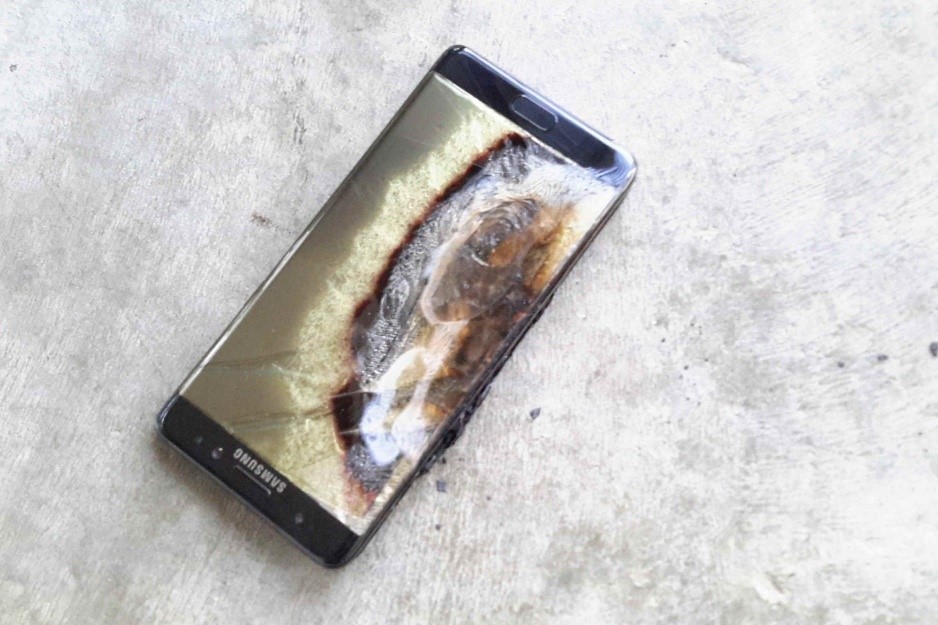Samsung’s Galaxy Note7 Apology Rings Loud and Clear

Samsung’s much-anticipated Galaxy Note7 went on sale this summer. The Android smartphone promised to be the ultimate showcase of Samsung’s design capabilities, with features including a 5.7-inch screen, stylus, and exploding batteries.

The latter, of course, was not part of the plan, and the company voluntarily recalled 2.5 million of the phones in early September. Just two weeks later, the Consumer Product Safety Commission recalled 1 million more. Shortly thereafter, airlines banned travelers from flying with the Note7 — on board or in their checked luggage — and Samsung announced it was taking the phones off the market entirely.
Last week, the company ran a full-page ad in major newspapers including the Wall Street Journal, New York Times, Washington Post, and USA Today. The ad featured a letter, signed by Samsung president and CEO Gregory Lee, apologizing for the battery problems and outlining the company’s plan for the future.
“The most effective way to mitigate the negative impacts of a crisis is through dedicated transparency and strong executive leadership,” says Bill Coletti, founder and CEO of Kith Consulting, a critical moments firm. “By demonstrating these characteristics in their apology letter, Samsung has laid a strong foundation from which to regain control of their narrative, along with the favor of their customers and investors.”
As data scientists and communication experts, Quantified Communications and Kith Consulting were interested in seeing how Samsung’s apology stacked up against similar communications from other companies. Quantified Communications used its proprietary platform to compare this letter to the written crisis communications in its database, measuring these communications on the four linguistic patterns QC’s experts have determined to be the key traits of crisis communications:
- Clarity: A measure of how easy it is to follow and understand content.
- Confidence: The degree to which the speaker appears to believe in his/her message.
- Persuasion: The ability to move the audience to a belief, position, or action.
- Trust: A measure of the perceived degree of truth in the message.
Samsung’s Message Raised the Bar in All 4 Metrics
 “It’s not often we see a company’s crisis communications perform this well,” said Noah Zandan, CEO/Co-founder of Quantified Communications. “Samsung’s letter delivers a clearly written apology in which Mr. Lee expresses remorse for the defect and recall, and confidently discusses the company’s plans to move forward,” said Zandan.
“It’s not often we see a company’s crisis communications perform this well,” said Noah Zandan, CEO/Co-founder of Quantified Communications. “Samsung’s letter delivers a clearly written apology in which Mr. Lee expresses remorse for the defect and recall, and confidently discusses the company’s plans to move forward,” said Zandan.
Lee leans on several persuasive techniques to regain the audience’s favor, with emotional appeals to their sense of pride and credibility-building references to the expert resources Samsung has brought in to help solve the problem.
“We know you expect more from Samsung, and that your loyalty is earned, not given. A careful Note7 investigation is underway and the findings will be shared when the analysis is complete. The process will be thorough and include some of the best independent technical experts in the world to help inform and validate our work.”
He establishes trust by using “we” and “our” language to indicate the company is taking responsibility for its mistakes. And, most importantly, rather than dwelling on what went wrong or who’s to blame, Mr. Lee offers detailed insights as to what will happen — and how it will happen — moving forward:
“We will re-examine every aspect of the device, including all hardware, software, manufacturing and the overall battery structure. We will move as quickly as possible but will take the time needed to get the right answers.”
Having been in the room when numerous internal stakeholders (legal, communications, executives and operations) are grinding on every word as well as the overall message of letters like these, it is critical to have the anecdotal pattern recognition of what seems right and the analytic data science insight of what has worked in the past.
To find out how QC can use our communication analytics platform to help your leadership deliver best-in-class messaging, email us at info@quantifiedcommunications.com.